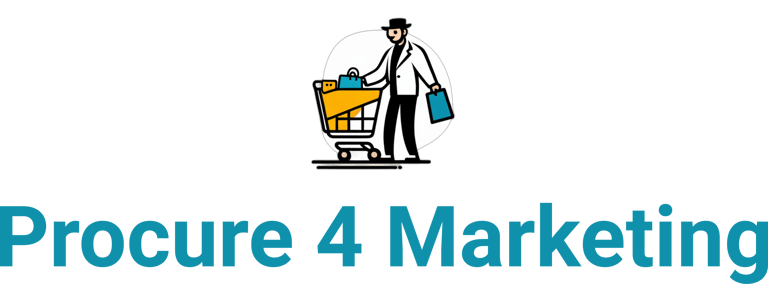Vendor Selection Process.
What is the vendor selection process? This complete guide explains the 7 key steps, from identifying a need and evaluating suppliers to negotiating a contract.
SUPPLY CHAIN
The Procure 4 Marketing Team
12/11/20233 min read


Quick Answer: What is the vendor selection process?
The vendor selection process is the strategic method a company uses to research, evaluate, and choose the right suppliers for its goods and services. A thorough process typically involves 7 key steps: 1) Identifying the Need, 2) Researching Vendors, 3) Issuing an RFP to create a shortlist, 4) Evaluating the Shortlist, 5) Negotiating a Contract, 6) Onboarding the New Vendor, and 7) Monitoring Performance. This ensures the chosen partner aligns with the company's needs for cost, quality, and reliability.
What is the Vendor Selection Process?
The vendor selection process is a critical procurement function for finding, vetting, and contracting with the right suppliers. It’s not about just picking the cheapest option; it’s a strategic decision that impacts the quality of your products, the efficiency of your operations, and the resilience of your entire supply chain. A well-executed process lays the foundation for a successful, long-term partnership.
The 7 Steps of the Vendor Selection Process
Let's walk through the 7 key steps using a simple, consistent example: a clothing company needing to select a new supplier for high-quality, organic cotton fabric.
Step 1: Identify and Define the Need
Before you can find the right vendor, you must clearly define what you need. This involves consulting with internal stakeholders to capture all requirements.
Example: The design and production teams determine they need a new supplier for organic cotton fabric. They create a document specifying the exact requirements: fabric weight, color consistency, organic certifications (like GOTS), quantity needed per quarter, and a target cost per yard.
Step 2: Research and Create a Longlist of Vendors
Conduct thorough market research to identify all potential vendors that could meet your needs.
Example: The procurement team uses online searches, attends industry trade shows, and asks for referrals to create an initial "longlist" of 10 potential organic cotton suppliers from around the world.
Step 3: Issue an RFP and Create a Shortlist
To formally compare the vendors, you send them a Request for Proposal (RFP). This document outlines your needs and asks them to submit a detailed proposal explaining how they would meet them, including pricing, delivery schedules, and quality control processes.
Example: The team sends the RFP to the 10 suppliers. After reviewing the submitted proposals, they create a "shortlist" of the top 3 most promising vendors that meet their core requirements.
Step 4: Evaluate the Shortlisted Vendors
This is the most critical step, where you conduct a deep evaluation of your shortlisted vendors against a set of balanced criteria.
Example: The team evaluates the 3 shortlisted fabric suppliers based on:
Cost: Considering the Total Cost of Ownership (TCO), not just the price per yard.
Quality: Requesting fabric samples to test for feel, durability, and color (Pilot Testing).
Reliability: Calling their other clients to ask about their on-time delivery record (Reference Checks).
Ethical Practices: Auditing their facilities to ensure they meet fair labor and environmental standards. Each vendor is scored on these criteria to allow for an objective comparison.
Step 5: Negotiate the Contract and Finalize Selection
Once you've scored the vendors and chosen the winner, you enter the final negotiation phase. The goal is to agree on terms that create a win-win partnership.
Example: The clothing company selects "Supplier B." The procurement team negotiates a 2-year contract with a 5% discount for prompt payment and clear clauses outlining quality standards and penalties for late deliveries. The contract is reviewed by the legal team and signed.
Step 6: Onboard the New Vendor
The selected vendor is formally onboarded into your company's systems.
Example: The fabric supplier is added to the company's payment system and integrated into its supply chain software. Key contacts from both companies are introduced, and the first official purchase order is placed.
Step 7: Monitor Performance and Manage the Relationship
The process doesn't end after the contract is signed. Continuously monitor the vendor's performance to ensure they are meeting their obligations and to build a strong, collaborative relationship.
Example: The procurement team tracks the fabric supplier's performance using a supplier scorecard with KPIs for on-time delivery and defect rate. They hold quarterly meetings to review performance and discuss future needs.
Frequently Asked Questions (FAQ)
Q1: What is an RFP (Request for Proposal)?
An RFP is a formal document used in the procurement process to request detailed proposals from potential vendors. It describes the project or need and asks vendors to explain how their product or service would be the best solution, including details on pricing, implementation, and their qualifications.
Q2: What is the "Total Cost of Ownership" (TCO)?
TCO is a financial principle that calculates the full lifecycle cost of a purchase. For a vendor, this includes not just the price of the goods but also the costs of shipping, potential import duties, maintenance, and the cost of any potential quality issues or delays. A seemingly cheaper vendor might have a much higher TCO.
Q3: How is vendor selection different from just purchasing?
Purchasing is the transactional act of buying a specific item. Vendor selection is the strategic, upfront process of deciding which company you are going to buy from. It's a long-term decision that involves research, evaluation, and relationship building.

